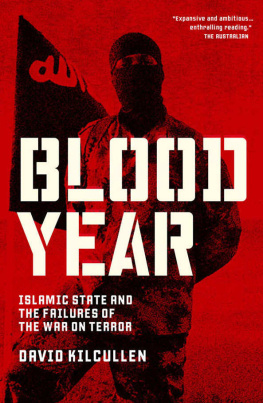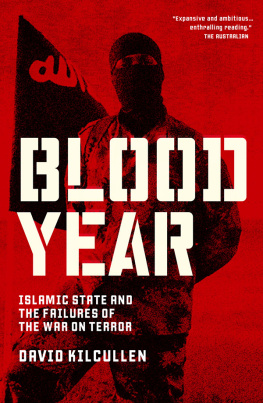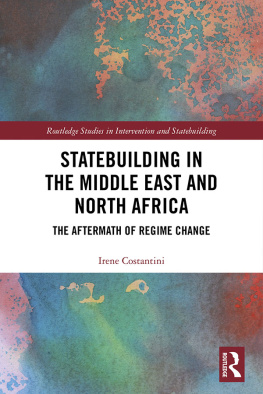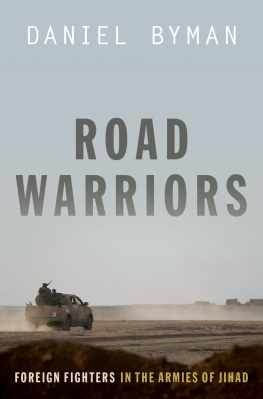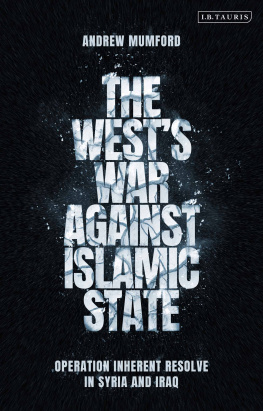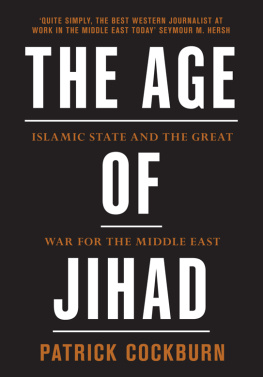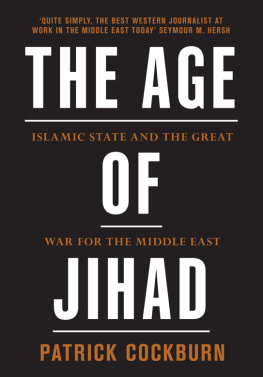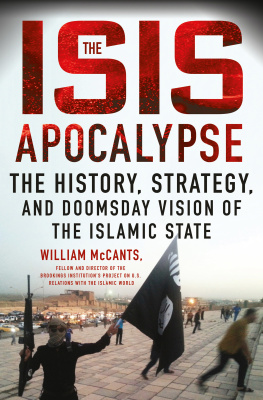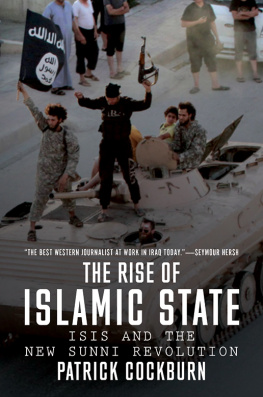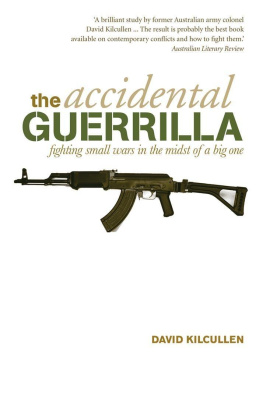Published by Black Inc.,
an imprint of Schwartz Publishing Pty Ltd
Level 1, 221 Drummond Street
Carlton VIC 3053, Australia
www.blackincbooks.com
Copyright David Kilcullen 2016
David Kilcullen asserts his right to be known as the author of this work.
First published in the United Kingdom in 2016 by C. Hurst & Co. (Publishers) Ltd.,
41 Great Russell Street, London, WC1B 3PL.
ALL RIGHTS RESERVED.
No part of this publication may be reproduced, stored in a retrieval system, or transmitted in any form by any means electronic, mechanical, photocopying, recording or otherwise without the prior consent of the publishers.
National Library of Australia Cataloguing-in-Publication entry:
Kilcullen, David, author.
Blood year: Islamic State and the failures of the war on terror / David Kilcullen.
9781863958257 (paperback)
9781925203936 (ebook)
Islam and stateIslamic countries. Islamic fundamentalismMiddle East.
TerrorismMiddle East. Islamic countriesPolitics and government21st century.
363.325
Cover design by Peter Long
Whoever fights monsters should see to it that in the process he does not become a monster. And if you gaze for long into an abyss, the abyss also gazes into you.
Nietzsche, Beyond Good and Evil, 1886
CONTENTS
PREFACE
In mid-2014 the Islamic State burst onto the global stage with a string of spectacular victories in Iraq, and a series of gruesome beheadings of journalists, aid workers and local civilians. For manysmart, well-educated people, whod been paying attention but had no particular expertise or interest in the ins and outs of transnational terrorismthe rise of ISIS was both baffling and deeply disappointing.
For years, their governments had been telling them that things were getting better. Western troops were out of Iraq, Osama bin Laden was dead, withdrawal from Afghanistan was on track, drones and special ops were handling the threat, militarized police and state surveillance were necessary evils that were keeping us safe, anddespite a few hiccups, like the fatal attack on a U.S. diplomatic compound in Benghazi in 2012people were thinking and speaking of the bad old days of President George W. Bushs Global War on Terror in the past tense. In President Obamas soothing phrase, the nations wars were ending.
Now, seemingly overnight, we were back to square one, and people wanted to know why. The crisis of 2014 thus prompted a string of books, each more excellent than the last, by journalists and scholars documenting the rise of ISIS, its ideology, eschatology, objectives, motives and antecedents, and seeking to explain its attraction for certain kinds of people in our own and other societies.
This is not one of those books.
That is, its not a book about ISIS: rather, its about what the emergence of ISIS tells us about the broader War on Terrorism since 2001. This is linked to the rise of the Islamic State, to be sure, but it also connects the Arab Spring, the resurgence of confrontation with Russia, the Iranian nuclear deal, and the European refugee crisis. These may seem loosely linked, but as I argue in the narrative that follows, theyre symptoms of the same problem.
Neither is this book a comprehensive history. On the contrary, its a personal account, by a mid-level player in some of the key events of the past decadethe wars in Iraq and Afghanistan, the development and implementation of counterinsurgency and counterterrorism strategy in the United States and elsewhereof how we came to get things so wrong, and what that tells us about the future.
Politicians of all stripes have an interest in turning terrorism into a partisan issue, rewriting history to protect their legacies, exploiting fear to further some agenda, or using terrorist incidents to attack opponents in the trench warfare that passes for political process. You cant blame them for thatpoliticians are politicians, you might as well blame a dog for barking. But partisan debate isnt objective reality, and to the extent that any of us think it is, we have bigger problems than ISIS. With that in mind, I should mention up front that I have no party political affiliation: Ive never voted in a U.S. presidential election, donated money to any candidate or political organization, been a political appointee, or held elected office. My intention here is simply to explain things as I see themwith all the limitations that any one persons perspective inevitably implies.
As an Australian professional soldier, as a civilian intelligence officer, then as a U.S. government employee, I served during the Bush administration in Iraq, Afghanistan, Pakistan, the Horn of Africa and Southeast Asia. During the Obama administration, I served in many of the same places as an adviser and consultant to the U.S. Government, NATO and allied governments. Im on record critiquing both administrations (for different reasons) in books, scholarly papers and congressional testimony. I mention this not to claim any particular expertise, just to illustrate that my outlook is professional not political.
Im also not an academic expert on terrorismmy field is guerrilla and unconventional warfare, which though related, is not quite the same thing. In fact, in the Lord of the Flies world of academia, guerrilla warfare and terrorism studies people belong to different (often warring) tribes. So, if youre looking for a scholarly treatise on ISIS or on terrorism in general, there are better books to read. What I am, however, is an ordinary guy caught up in extraordinary events, a participant in parts of the story Im about to tell, and someone who has been watching closely and keeping notes as this enormous slow-motion train wreck took place.
For what its worth, then, this is my perspective on how we got here, where ISIS came from, what it all means, and what may happen next.
David Kilcullen
Washington D.C., November 2015
NOTE ON SOURCES
This account uses only open source information. To my knowledge, it makes no use of any classified material, in any form whatsoever, including information that was once classified but has since been leaked to the public (for example, material released by Wikileaks after 2010 or Edward Snowden in 2013). It does use materialsuch as CIA reports, court documents, congressional investigations or emails released to the public following court ordersthat has been formally declassified and released in accordance with official government policy. This imposes inevitable limitations on some parts of the discussion; and of course, theres always the possibility that in thirty or fifty yearsor next weeksome hitherto classified information may emerge that changes parts of my analysis.
A limited amount of material in the second part of this account (and almost all of the first half) was previously published under my name, either in Quarterly Essay, Issue No. 58, May 2015, or as news analysis between July 2014 and September 2015. This material is used by permission of the copyright holder.
Finally, in discussing Syria, Iraq and North Africa, Ive been fortunate to have access not only to my own personal notes from the field, but also to a stream of multiple-source reporting (all, again, unclassified) from people on the ground. For obvious reasons, I have an absolute obligation to protect the identities of these people, many now living in areas controlled by ISIS, the Taliban or the Assad regime. Whenever possible, Ive sought to verify information from any field source with at least one other, and when a news organization or another analyst has published material that confirms or covers essentially the same information, Ive chosen to quote that authority rather than mention my field source. When only one source is available, Ive said so, and offered as much information on the sources identity as I can safely give.

